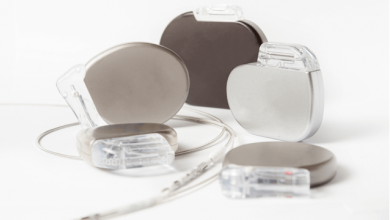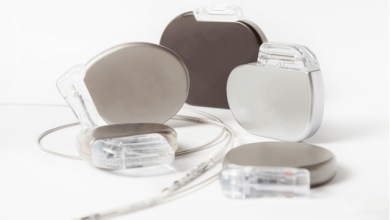Search results
Author(s):
Steven Back
,
Peter R Kowey
Added:
3 years ago
Ventricular arrhythmias are a therapeutic challenge. They occur frequently in clinical practice, are found in patients with and without structural heart disease, and most importantly, are unpredictable and potentially deadly. Patients with a history of sustained ventricular tachycardia (VT) and VF or those at high risk for such arrhythmias, may require an ICD to prevent sudden cardiac arrest…
View more
Author(s):
Niraj Varma
,
Renato Pietro Ricci
,
Loredana Morichelli
Added:
3 years ago
Monitoring after implant of patients with cardiac implantable electronic devices (CIED) forms a part of both device and patient care, and is the responsibility of the implanting centre. Monitoring is challenged by the increasing number and technical complexity of implanted devices coupled with the increasing clinical complexity of the patient population. Current practice is based on quarterly to…
View more
Author(s):
Eun-Jeong Kim
,
Giovanni Davogustto
,
William G Stevenson
,
et al
Added:
3 years ago
Myocardial scars from infarction or replacement fibrosis in non-ischaemic cardiomyopathies are the common substrate for sustained monomorphic ventricular tachycardia (VT).1,2 In selected patients at high risk of ventricular arrhythmias, placement of an implantable cardioverter-defibrillator (ICD) is effective for prevention of sudden cardiac death.2 Although ICDs are effective in terminating VT…
View more
Author(s):
Ryan Wallace
,
Hugh Calkins
Added:
3 years ago
Author(s):
Emmanuel Koutalas
,
Borislav Dinov
,
Sergio Richter
,
et al
Added:
3 years ago
Since the introduction of electroanatomical mapping (EAM) into clinical practice in 1997, remarkable progress has been made in catheter infrastructure, signal recording and processing, catheter guidance and visualisation and simultaneous real-time depiction and processing of different types of critical information during an ablation procedure.1 The latter, along with the comprehension of the…
View more
Author(s):
Anthony C Li
,
Amit Kaura
,
Nicholas Sunderland
,
et al
Added:
3 years ago
Since the 1990s, the publication of several large randomised controlled trials (RCTs) have established the efficacy of implantable cardioverter defibrillator (ICD) therapy in reducing the risk of sudden cardiac death (SCD) in high-risk patients. Collectively these trials have demonstrated a significant all-cause mortality reduction compared with medical therapy alone, for both the primary and…
View more
Author(s):
Jaber Abboud
,
Joachim R Ehrlich
Added:
3 years ago
Implantable cardioverter defibrillators (ICDs) have been used for over 30 years to prevent sudden cardiac death (SCD). The first indications for ICD placement were secondary prevention; later trials demonstrated a primary prevention benefit of ICD therapy in patients at risk of SCD. ICD therapy prolongs life in both patient populations.1 However, the efficacy of an ICD depends on its ability to…
View more
Author(s):
Joshua R Silverstein
,
Demosthenes G Katritsis
,
Mark E Josephson
Added:
3 years ago
Sudden cardiac death (SCD) is one of the leading causes of death in developed countries. The yearly incidence of SCD is estimated to be 3,000,000 worldwide and between 300,000–450,000 in both the US and Western Europe.1,2 The survival rate for SCD is <1 % worldwide and close to 5 % in the developed world.3 In the past, cardiac arrest was thought to be most commonly due to ventricular…
View more
Author(s):
Hussam Ali
,
Pierpaolo Lupo
,
Riccardo Cappato
Added:
3 years ago
Numerous large clinical trials have demonstrated the benefit of implantable cardioverter-defibrillators (ICDs) to prevent sudden cardiac death (SCD) in selected populations.1,2 These results and advances in defibrillation therapies have led to an impressive expansion of ICD implants and indications in recent decades. Although initially focusing on secondary prevention, current ICD indications…
View more
Author(s):
Mark Elliott
,
Sheikh Momin
,
Barnaby Fiddes
,
et al
Added:
3 years ago
Deep brain stimulation (DBS) is an expanding neurosurgical treatment for refractory neurological conditions such as Parkinson’s disease and essential tremor, with over 120,000 devices implanted worldwide.1 The rate of cardiac implantable electronic device (CIED) implantation is rising annually, with 739 pacemaker implants per million and 141 ICD implants per million in western Europe in 2015.2…
View more














